Temple taoïste de Dongyue, Pékin - Billets, heures d'ouverture, points forts et conseils

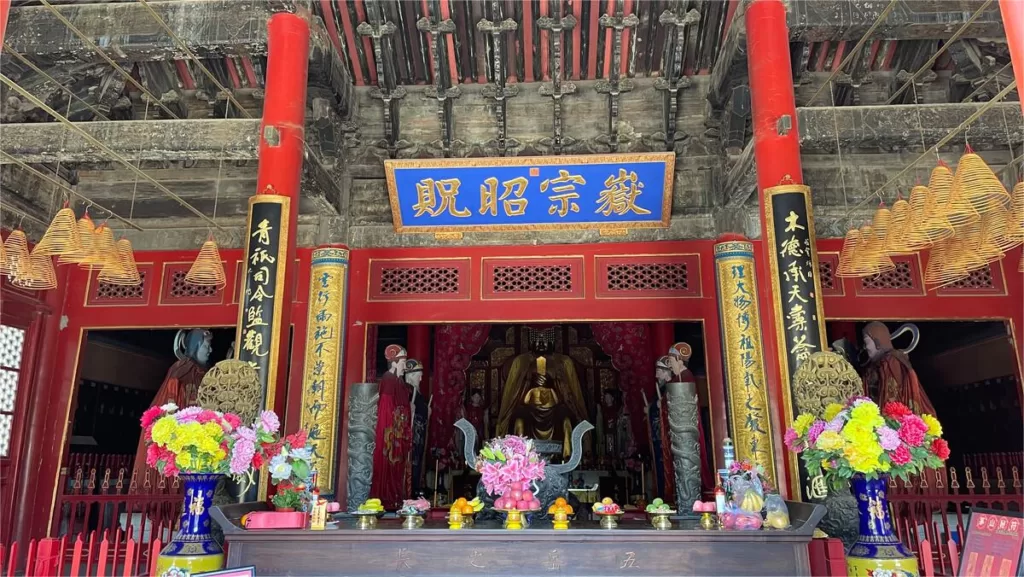
Dongyue Taoist Temple (东岳庙), located in Beijing, is a historic and culturally significant religious site that holds a prominent place in Taoist tradition. With a history dating back over 600 years, the temple stands as a testament to the rich spiritual heritage of China.
Situated in the Chaoyang District, Dongyue Temple is renowned for its exquisite architecture and tranquil surroundings. Its design embodies traditional Chinese temple aesthetics, featuring magnificent gateways, ornate pavilions, and beautifully landscaped gardens. The temple complex covers a vast area, with various halls, courtyards, and altars dedicated to different deities and Taoist beliefs.
Dongyue Temple holds a special significance for Taoists as it is regarded as the headquarters of the Beijing Taoist Association. Devotees and visitors flock to the temple to pay homage to various Taoist gods, seek blessings, and participate in religious rituals and ceremonies. The temple’s serene atmosphere provides a sanctuary for spiritual reflection and meditation amidst the bustling city.
Within its halls, Dongyue Temple showcases a vast collection of Taoist art, calligraphy, and religious artifacts. Intricate sculptures and paintings depicting Taoist mythology and legends adorn the walls, offering visitors a glimpse into the rich symbolism and philosophy of Taoism.
Today, Dongyue Taoist Temple continues to serve as a vibrant cultural and religious center, attracting both locals and tourists alike. Its historical significance, architectural splendor, and spiritual ambiance make it a must-visit destination for those seeking to explore the profound traditions of Taoism in the heart of Beijing.
Table des matières
- Informations de base
- Localisation et transport
- Who is Enshrined in the Temple
- History of Dongyue Taoist Temple
- Highlights of Dongyue Taoist Temple
- Vlog about Dongyue Taoist Temple
- Conseils utiles résumés à partir d'études
- Other Temples in Beijing
Informations de base
| Durée estimée de la visite | 1 - 2 heures |
| Prix du billet | 10 RMB |
| Heures d'ouverture | 8.30 - 16.30 |
| Numéro de téléphone | 0086-010-65510151 |
Localisation et transport
Dongyue Taoist Temple is situated in the Chaoyang District, which is a bustling area in Beijing. Its exact address is No. 141 Chaowai Street, Chaoyang District, Beijing, China. To get there, you can choose the following ways:
Bus : Take bus 75, 101, 109, 110, 139, or 615, get off at Shenlu Street Stop (神路街站), and you will be standing right at the entrance of the temple.
Métro : The nearest subway station to Dongyue Taoist Tempel is Dongdajie (东大街) on line 6. After getting out of the station from Exit A, walk about 600 meters to the west to reach the temple.
Who is Enshrined in the Temple
In Dongyue Taoist Temple, the main deity who is enshrined and worshiped is the Taoist deity Dongyue Dadi, also known as the Great Emperor Dongyue. Dongyue Dadi is considered the chief deity of the Mount Tai (Dongyue) pantheon, which is a group of heavenly officials and earth deities in Taoism.
Dongyue Dadi is believed to govern and oversee the affairs of the earth, including human affairs, blessings, and protection. As the patron deity of Dongyue Temple, he holds a central position in the temple’s religious ceremonies and rituals.
The worship of Dongyue Dadi emphasizes virtues such as righteousness, justice, and morality. Devotees seek his blessings for prosperity, success, and well-being in various aspects of life, including career, health, and relationships.
History of Dongyue Taoist Temple
Dongyue Taoist Temple was initially constructed during the Yuan Dynasty in the year 1319, under the reign of Emperor Renzong. It was built to honor the Taoist deity Dongyue Dadi, who is believed to govern the earth and oversee human affairs. The location was chosen based on the belief that the eastern direction, associated with the rising sun and new beginnings, is auspicious in Taoist cosmology.
Over the centuries, Dongyue Temple underwent numerous expansions and renovations. During the Ming Dynasty, it was further expanded and became an important center for Taoist activities. Many eminent Taoist priests and scholars were associated with the temple during this period, contributing to its significance and influence.
During the Qing Dynasty, Dongyue Temple experienced another wave of expansion and reconstruction, resulting in its current scale and architectural grandeur. The temple complex was expanded to cover a large area, featuring elaborate gates, pavilions, halls, and courtyards. Its architectural style reflects the traditional Chinese temple design, characterized by intricate woodwork, colorful paintings, and exquisite craftsmanship.
Throughout its history, Dongyue Taoist Temple served as the headquarters of the Beijing Taoist Association, further solidifying its position as a center for Taoist activities and governance. It became a place of worship, study, and community for Taoist practitioners, attracting devotees and scholars from far and wide.
During periods of political and social change in China, such as the Cultural Revolution in the 20th century, Dongyue Temple, like many other religious sites, faced challenges and restrictions. However, with the revival of religious freedom in the late 20th century, the temple was restored and reopened to the public, continuing its legacy as a significant Taoist site.
Highlights of Dongyue Taoist Temple
Splendeur architecturale
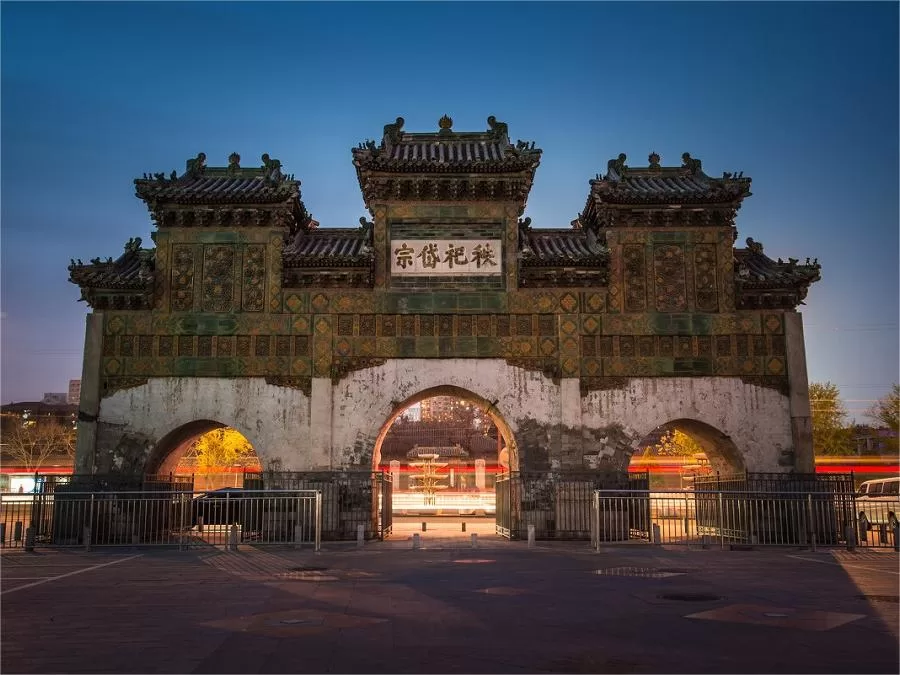
The Dongyue Temple complex showcases grand gateways, intricately carved stone pillars, and exquisite halls adorned with colorful paintings and ornate woodwork. Its traditional Chinese temple design, influenced by the Ming and Qing dynasties, reflects the craftsmanship and attention to detail of the era. The temple’s beauty lies in the harmonious blend of architectural elements, creating a serene and visually stunning atmosphere. Dongyue Temple stands as a testament to the rich architectural heritage of China and captivates visitors with its timeless grandeur.
Sacred Altars and Halls
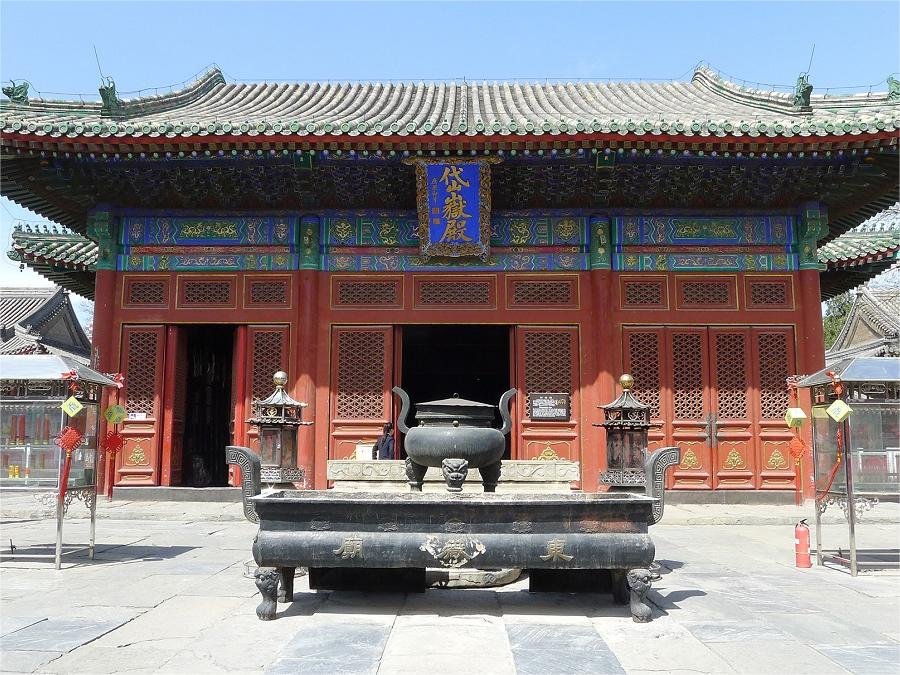
Dongyue Taoist Temple in Beijing houses a series of sacred altars and halls that captivate visitors with their spiritual significance. Each hall is dedicated to specific Taoist deities and spirits, featuring elaborate sculptures, statues, and vibrant paintings that depict Taoist mythology and pantheons. The atmosphere is imbued with reverence and devotion as devotees pay their respects and seek blessings from these revered figures. The intricate details and artistic representations within the altars and halls offer a glimpse into the rich Taoist traditions and beliefs, inviting visitors to immerse themselves in the spiritual heritage of China.
Yuelao Shrine
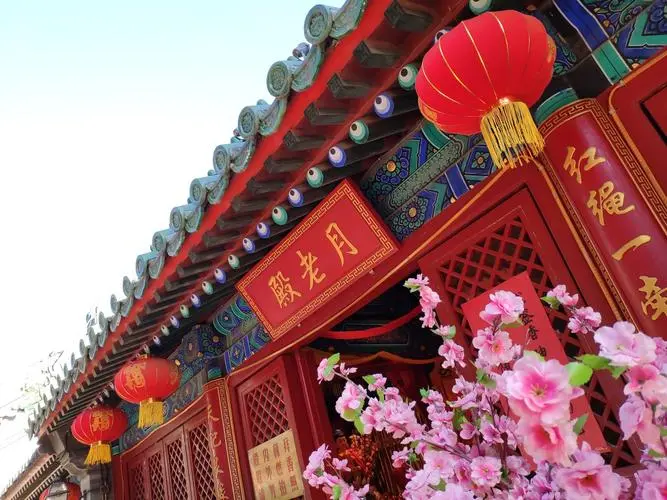
The Yuelao Shrine within Dongyue Taoist Temple is a dedicated space honoring the Taoist deity Yuelao, also known as the God of Marriage and Matchmaking. This shrine attracts visitors seeking blessings for love, relationships, and successful marriages. Adorned with offerings, prayer plaques, and red ribbons symbolizing love and connection, the Yuelao Shrine creates an atmosphere of romance and hope. Devotees come to seek Yuelao’s guidance and intervention in matters of the heart, believing in his ability to bring forth harmonious unions.
Vlog about Dongyue Taoist Temple
Conseils utiles résumés à partir d'études
Touching the Copper Mule: One of the highlights of the temple is the Copper Mule statue, believed to be the mount of Wen Chang, the God of Literature. Legend has it that touching the statue can heal illnesses and bring good fortune. Participating in this tradition, known as “Touching the Copper Mule at Dongyue Temple,” is a popular folk activity among locals.
The Seventy-Six Departments: Upon entering the temple courtyard, you’ll notice two side corridors with seventy-six departments on each side. Each department is presided over by a deity responsible for judging good and evil. The statues in each department depict various scenes from the underworld. While observing these statues, it’s important not to offer prayers or worship.
The Stone Forest: Adjacent to the main hall, there are two stone forests, one on the east and one on the west. The east stone forest contains a significant monument called the “Daoxing Stele,” protected by a glass cover. This stele, written by the renowned calligrapher Zhao Mengfu, is a treasure of the temple. Although many stone monuments were destroyed during the Cultural Revolution, the remaining ones bear visible signs of damage and repair, offering insight into the temple’s tumultuous history.
Other Temples in Beijing

Hongluo Temple – a temple blessed with breathtaking natural surroundings

Wofo Temple – a temple with a statue of a reclining Buddha
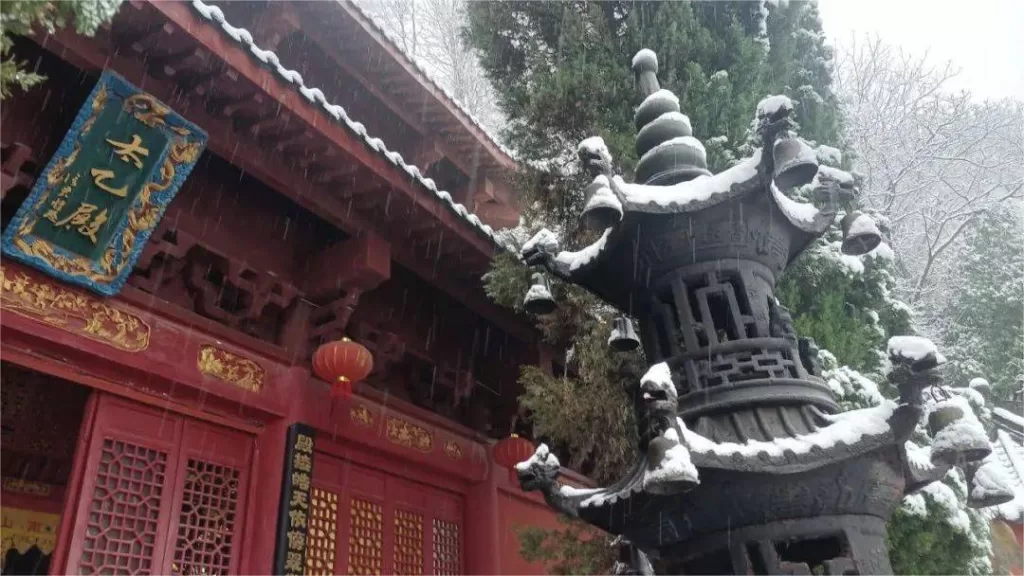
Temple du Nuage Blanc - un temple taoïste de la dynastie Tang
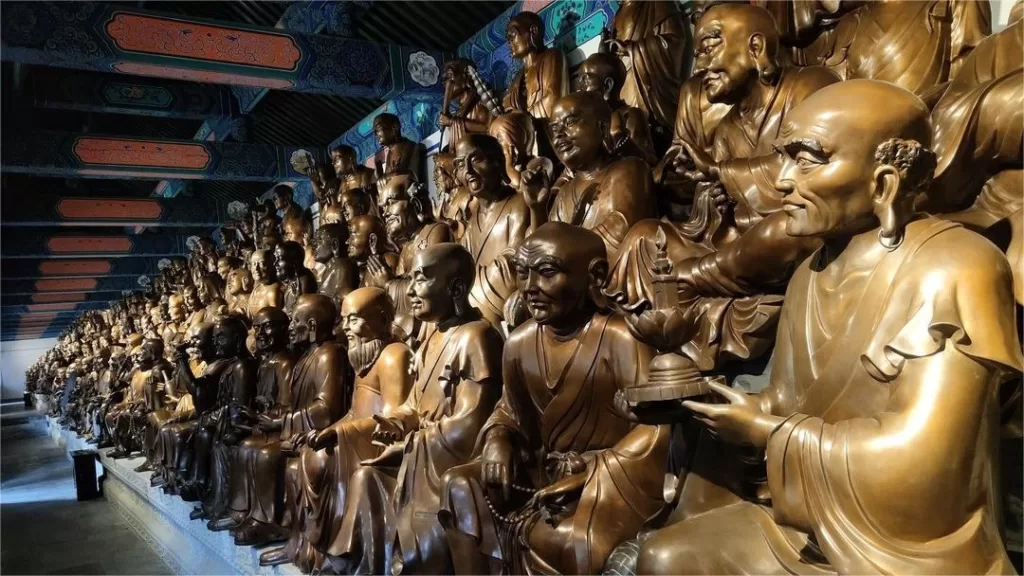
Jietai Temple – a temple situated at the foot of Jietai Mountain

Temple de Yonghe Lama - un temple bouddhiste tibétain
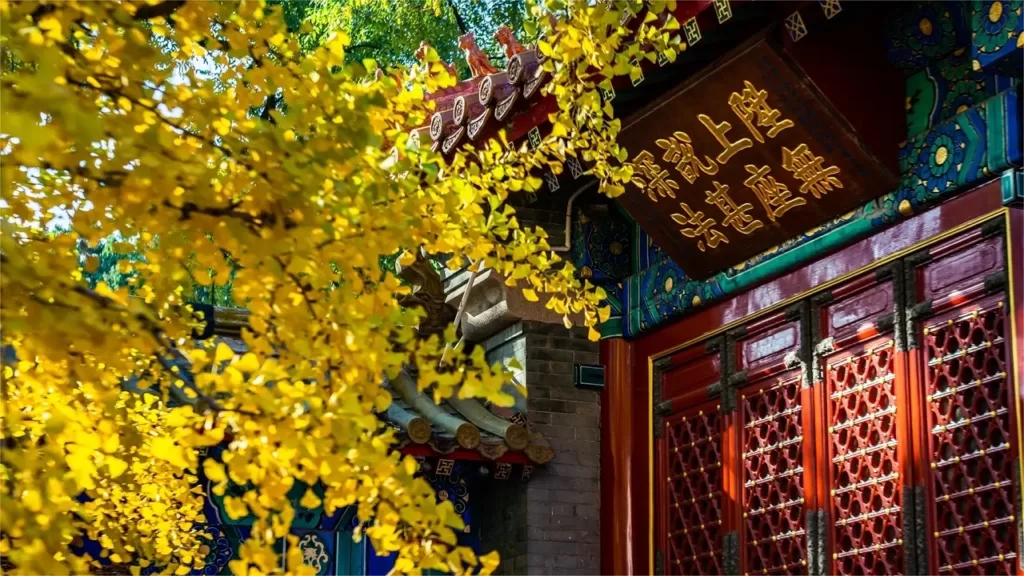
Badachu park – a cluster of eight temples